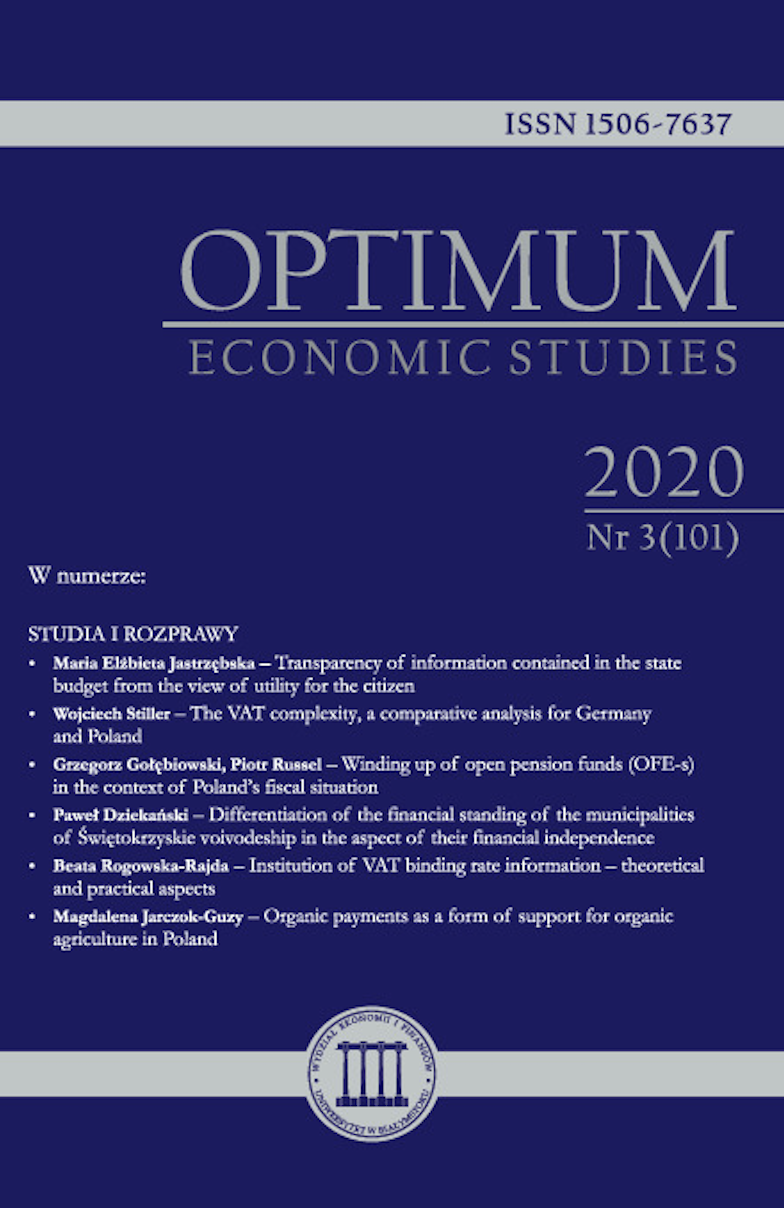The VAT complexity, a comparative analysis for Germany and Poland
The VAT complexity, a comparative analysis for Germany and Poland
Author(s): Wojciech StillerSubject(s): Economy
Published by: Wydawnictwo Uniwersytetu w Białymstoku
Keywords: compliance costs; complexity; Germany; Poland; language analysis; legislation; tax; VAT
Summary/Abstract: Purpose – This article aims to examine the complexity of the value added tax (VAT) in Germany and Poland.Research method – This paper uses a quantitative analysis of the VAT Act and a selected amendment to this Act in Germany and Poland. I consider the German and Polish language versions of the VAT Directive and the Vouchers Directive as a benchmark for comparing VAT complexity. A comparison of a number of law amendments and compliance costs in both countries enhances the analysis.Results – The VAT complexity in Poland significantly exceeds the complexity of the German VAT system. This is true for all analysed aspects. In Poland, the compliance costs of VAT are significantly higher than in Germany. The Polish VAT law is amended more frequently and is much more comprehensive than its German counterpart. This can be only partially justified by special regulations to combat tax fraud. The high VAT complexity in Poland is also due to the complicated language and structure of the law. Although the German translation of the Vouchers Directive includes more words than the Polish version, the Polish legislator needs about twice as many words as their German counterpart for its implementation.Originality /value – Tax law is often criticised for its complexity. This study is the first to use the VAT Directive for a comparative study of the VAT complexity and reveals that the Polish legislator uses considerably more text for similar content than their German counterpart.
Journal: Optimum. Economic Studies
- Issue Year: 101/2020
- Issue No: 3
- Page Range: 15-29
- Page Count: 15
- Language: English

